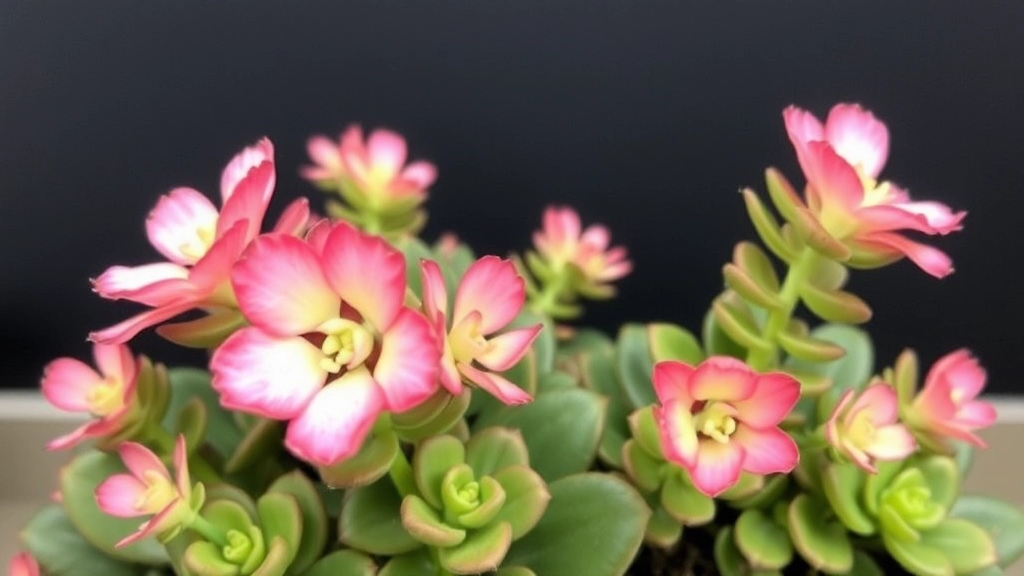Caring for Your Panda Plant
Understanding Its Needs
When it comes to caring for your Panda Plant, also known as Kalanchoe Tomentosa, understanding its needs is crucial for thriving growth. This unique succulent, with its fuzzy, panda-like leaves, requires specific light conditions to flourish. Ideally, place it in a spot where it can receive bright, indirect sunlight for most of the day. Too much direct sunlight might scorch its leaves, while too little can hinder its growth.
Watering Your Kalanchoe Tomentosa
Watering your Kalanchoe Tomentosa correctly is another key aspect. These plants prefer a ‘soak and dry’ method, meaning you should water them thoroughly and then let the soil dry out completely before the next watering. Overwatering can lead to root rot, so it’s important to ensure that the plant’s pot has good drainage. By following these simple tips, your Panda Plant will remain healthy and vibrant.
Optimal Light Conditions for Kalanchoe Tomentosa
When it comes to keeping your Kalanchoe tomentosa, or Panda Plant, healthy, light conditions play a pivotal role.
Many plant enthusiasts often worry about providing the right amount of light. Too much or too little can lead to various issues, affecting the plant’s overall health.
Understanding Light Requirements
Kalanchoe tomentosa thrives in bright, indirect sunlight. Here are some key points to consider:
- Direct Sunlight: While it can tolerate some direct sunlight, prolonged exposure can scorch its leaves.
- Indirect Light: Ideally, place your Panda Plant near a window where it can receive filtered light.
- Artificial Light: If natural light is limited, consider using grow lights to supplement its needs.
Signs of Proper Light Conditions
How can you tell if your Panda Plant is getting the right light? Look for these indicators:
- Vibrant Leaves: Healthy, vibrant leaves indicate sufficient light.
- Leggy Growth: If your plant appears stretched or leggy, it may need more light.
- Leaf Discoloration: Yellowing leaves can signal both overexposure and insufficient light.
By ensuring your Kalanchoe tomentosa gets the right light, you set the foundation for its growth and vitality. For more detailed advice, check out our essential tips for healthy growth. Additionally, if you’re considering other varieties, our top flowering Kalanchoe species and care tips might be helpful.
Watering Techniques for Healthy Growth
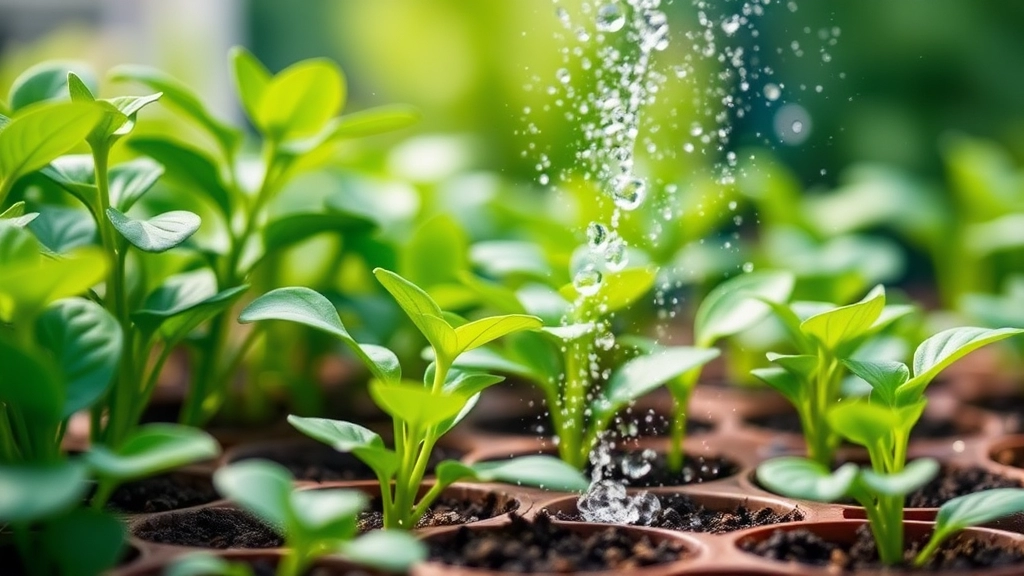
So, you’ve got your Kalanchoe Tomentosa, or as most of us like to call it, the Panda Plant. Now, let’s chat about one of the trickiest parts of keeping it happy: watering.
The Watering Dilemma
You might be wondering, “How much water does my Panda Plant really need?”
It’s easy to overdo it, especially if you’re used to caring for other houseplants. But here’s the deal: Kalanchoe Tomentosa is a succulent, which means it stores water in its leaves. This makes it pretty forgiving, but you still need to nail down your watering game.
Key Watering Tips
- Check the Soil: Before you even think about watering, poke your finger about an inch into the soil. If it feels dry, it’s time for a drink. If it’s still moist, hold off.
- Water Deeply, But Infrequently: When you do water, give it a good soak. Let the water drain out of the bottom of the pot. This encourages the roots to grow deeper.
- Seasonal Adjustments: In the growing season (spring and summer), you might need to water more often. But in the winter, ease up. Your Panda Plant will be in a bit of a dormancy phase.
- Use Room Temperature Water: Cold water can shock the roots. Let your water sit out for a bit before using it.
Signs of Overwatering
If you notice yellowing leaves or mushy stems, you might be overdoing it. Time to take a step back and reassess your watering routine.
The Best Soil Mix for Panda Plants
When it comes to ensuring your Kalanchoe Tomentosa, commonly known as the Panda Plant, thrives, the right soil mix plays a crucial role. You might be wondering, what kind of soil is best for my Panda Plant?
Ideal Soil Characteristics
Panda Plants prefer well-draining soil that prevents water retention, which can lead to root rot. Here’s what to look for:
- Cactus or Succulent Mix: These are specially formulated to provide excellent drainage.
- Perlite or Pumice: Adding these materials increases aeration and drainage.
- Organic Matter: A small amount of compost can provide nutrients without compromising drainage.
DIY Soil Mix Recipe
If you prefer to create your own mix, here’s a simple recipe:
- 50% Cactus Mix
- 25% Perlite
- 25% Coarse Sand
Mix these components thoroughly to ensure an even distribution. This combination will help your Panda Plant flourish by mimicking its natural habitat.
Signs of Poor Soil Conditions
Keep an eye out for signs that your soil may not be up to par:
- Yellowing Leaves: Indicates overwatering or poor drainage.
- Mushy Roots: A clear sign of root rot, often caused by heavy soil.
By using the right soil mix, you can avoid these common pitfalls and promote healthy growth for your Panda Plant. For more detailed care tips, check out our complete guide on Kalanchoe Panda Plant care. Additionally, if you’re interested in other Kalanchoe varieties, our top Kalanchoe succulent varieties and care tips might be helpful.
Temperature and Humidity Requirements
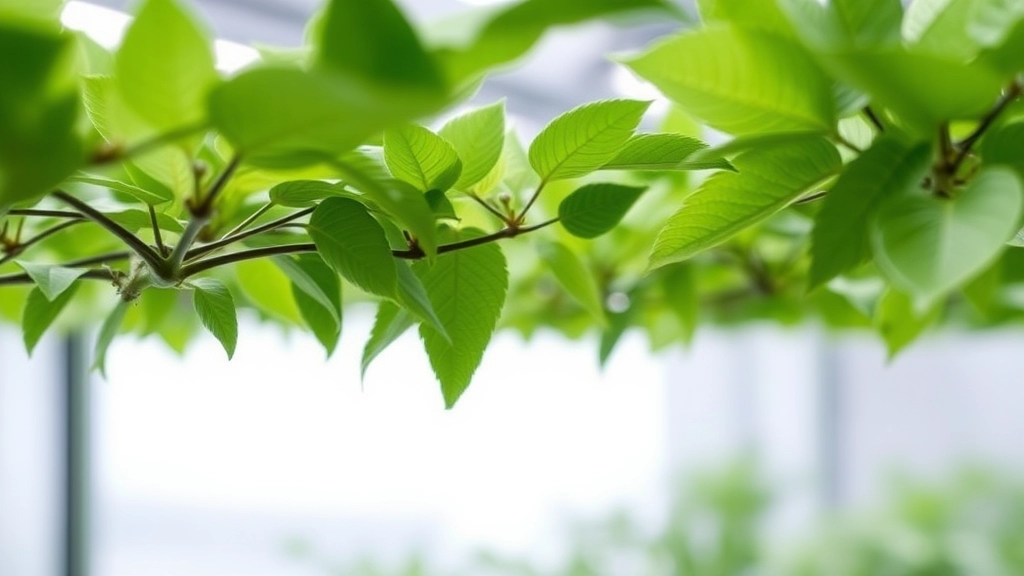
Have you ever wondered why your Kalanchoe Tomentosa, or Panda Plant, isn’t thriving as expected?
Temperature and humidity play pivotal roles in the health of your plant.
Ideal Temperature Range
Kalanchoe Tomentosa thrives best in a warm environment.
- Optimal Temperature: Aim for a range of 20°C to 25°C (68°F to 77°F) during the day.
- Night Temperature: At night, it can tolerate slightly cooler temperatures, ideally around 15°C to 18°C (59°F to 64°F).
Humidity Levels
While this succulent is quite adaptable, it prefers moderate humidity.
- Ideal Humidity: Keep humidity levels between 30% and 50%.
- Avoid High Humidity: Excess moisture can lead to problems like root rot.
Tips for Maintaining Temperature and Humidity
- Location: Place your Panda Plant near a south-facing window to benefit from natural light and warmth.
- Avoid Drafts: Keep it away from cold drafts or sudden temperature changes, which can stress the plant.
- Use a Humidifier: If you live in a particularly dry climate, consider using a humidifier to maintain optimal humidity levels.
How to Repot Your Panda Plant
Repotting your Kalanchoe Tomentosa, commonly known as the Panda Plant, is essential for its growth and overall health. You might be wondering when and how to repot this charming succulent.
When to Repot
- Signs of Repotting:
- Roots are visible through the drainage holes.
- The plant has outgrown its current pot.
- Soil dries out too quickly.
Typically, you should consider repotting every 2-3 years or when you notice these signs.
Steps to Repot Your Panda Plant
- Choose the Right Time:
Late spring or early summer is ideal, as the plant is actively growing. - Select a Suitable Pot:
Opt for a pot that’s one size larger than the current one.
Ensure it has drainage holes to prevent waterlogging. - Prepare the Soil:
Use a well-draining soil mix, such as a cactus or succulent mix.
You can also create your own by mixing potting soil with perlite or sand. - Remove the Plant:
Gently grasp the base of the plant and wiggle it free from the pot.
Be careful not to damage the roots. - Inspect the Roots:
Trim any dead or rotting roots with sterile scissors.
This promotes healthy growth in the new pot. - Place the Plant in the New Pot:
Position the plant in the centre, then fill around it with the prepared soil mix.
Ensure the top of the root ball is level with the rim of the pot. - Watering After Repotting:
Wait a week before watering to allow the roots to settle.
Then, water lightly to encourage root establishment.
Repotting can seem daunting, but following these steps will ensure your Panda Plant continues to thrive. For more detailed guidance, check out our complete guide to caring for your Kalanchoe Panda Plant. Additionally, if you’re interested in other Kalanchoe varieties, explore our guide to top Kalanchoe varieties with pink edges.
Common Issues: Overwatering, Root Rot, and Leaf Curling
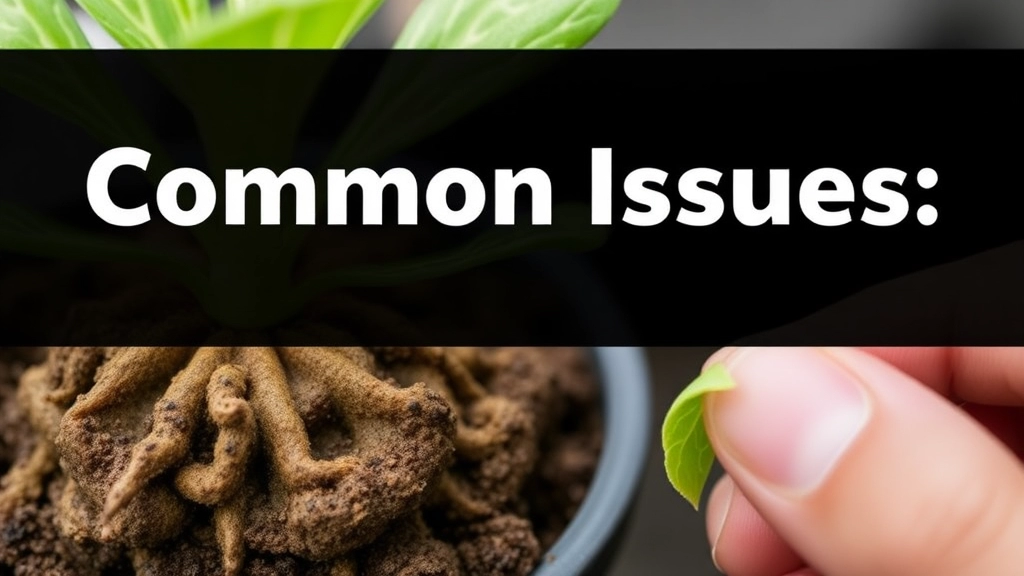
So, you’ve got your Kalanchoe Tomentosa, aka the Panda Plant, and everything seems peachy. But then, bam! You notice some leaves curling or drooping, and panic sets in.
Overwatering
Overwatering is the sneaky culprit behind many plant woes.
- Signs to Watch For:
- Yellowing leaves
- Mushy stems
- A musty smell from the soil
- Quick Fix:
- Allow the soil to dry out completely before watering again.
- Check if the pot has drainage holes. If not, it’s time to repot!
Root Rot
If overwatering continues, you might face root rot.
- Symptoms:
- Wilting leaves despite wet soil
- Blackened, mushy roots when you check them
- What to Do:
- Remove the plant from the pot and inspect the roots.
- Trim away any rotten parts and repot in fresh, dry soil.
Leaf Curling
Leaf curling can be a sign of stress.
- Causes:
- Too much direct sunlight
- Sudden temperature changes
- Pests lurking around
- Solution:
- Adjust the plant’s location to a spot with indirect light.
- Keep it in a stable temperature environment.
Propagation Methods: Stem Cuttings and Offsets
As we explore the best ways to ensure your Kalanchoe Tomentosa flourishes, understanding propagation methods is essential for expanding your collection or sharing with friends.
Stem Cuttings
Stem cuttings are a straightforward way to propagate your Panda Plant. Here’s how to do it:
- Choose a Healthy Stem: Look for a robust, healthy stem with several leaves.
- Make the Cut: Use clean, sharp scissors to cut a 4-6 inch section from the stem, ensuring it has a few leaves attached.
- Let it Callous: Place the cutting in a dry, warm spot for a few days. This allows the cut end to callous over, reducing the risk of rot.
- Plant the Cutting: Once calloused, plant the cutting in a well-draining soil mix, burying the cut end about an inch deep.
- Water Sparingly: Water lightly and place the pot in bright, indirect light.
Offsets
Offsets, or small plantlets that grow at the base of the parent plant, are another excellent propagation method. Here’s how to handle them:
- Identify Offsets: Look for small rosettes at the base of your Kalanchoe Tomentosa.
- Remove Carefully: Gently twist or cut the offset from the parent plant, ensuring you include some roots.
- Prepare for Planting: Allow the offset to dry for a few hours to form a callous.
- Plant and Water: Plant in a suitable soil mix and water lightly, keeping it in bright, indirect light.
Both methods are effective, and you can choose based on your preference and the plant’s condition. For more detailed care tips, you can refer to our Kalanchoe Tomentosa Care Guide. Additionally, if you are interested in other propagation techniques, check out our guide on propagating Kalanchoe Beharensis.
Managing Pests: Mealybugs and Other Challenges
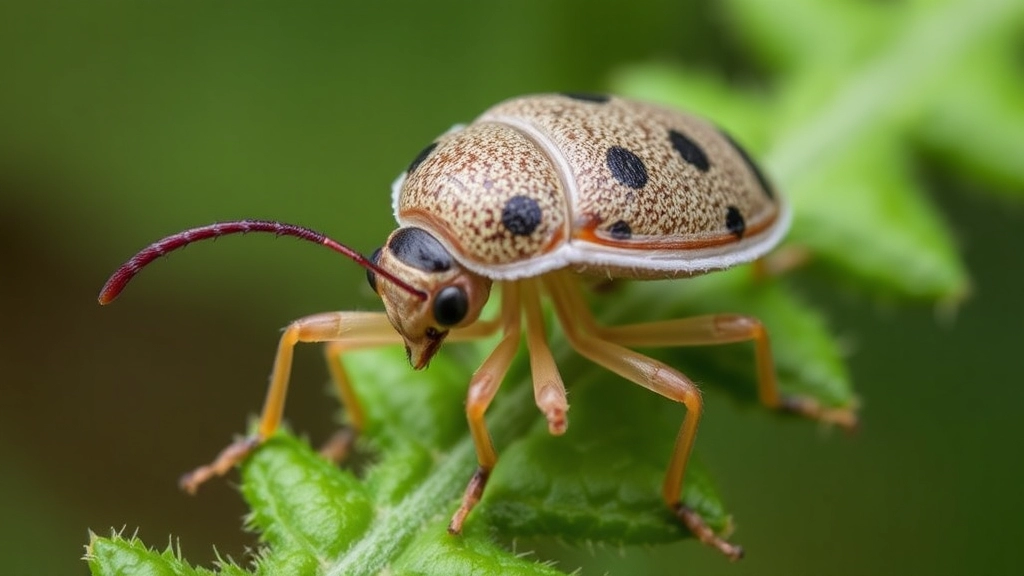
So, you’ve got your Kalanchoe Tomentosa thriving, but suddenly, you notice some unwelcome guests.
What’s that white fluff on your Panda Plant?
Chances are, it’s mealybugs. These tiny pests can be a real headache, but don’t worry; we can tackle them together!
Identifying Mealybugs
- Appearance: They look like little cotton balls or white fluff on the leaves and stems.
- Damage: They suck the sap from your plant, which can lead to yellowing leaves and stunted growth.
How to Get Rid of Them
- Manual Removal:
- Use a cotton swab dipped in rubbing alcohol to wipe them off.
- This method is effective for small infestations.
- Insecticidal Soap:
- Spray your plant with a solution of insecticidal soap.
- Make sure to cover all areas, especially the undersides of the leaves.
- Neem Oil:
- Mix neem oil with water and spray it on your plant.
- This natural remedy disrupts the pests’ lifecycle.
- Isolation:
- If you spot mealybugs, isolate your Panda Plant to prevent the pests from spreading to other plants.
Other Common Pests
- Spider Mites:
- Look for tiny webs and speckled leaves. Increase humidity to deter them.
- Aphids:
- These little guys can also suck sap. A strong spray of water can often dislodge them.
Prevention Tips
- Regular Inspections:
- Check your plants weekly for any signs of pests.
- Healthy Environment:
- Keep your Panda Plant healthy with proper light, water, and soil. A strong plant is less susceptible to pests.
- Avoid Overcrowding:
- Give your plants enough space. Crowded plants can attract pests.
As we delve deeper into the care of your Kalanchoe Tomentosa, it’s essential to consider how fertilization plays a crucial role in its growth and vitality.
Many plant enthusiasts often wonder whether fertilizing their Panda Plant is necessary. The good news is that Kalanchoe Tomentosa is relatively low-maintenance when it comes to feeding.
Here are some straightforward tips to ensure your Panda Plant receives the right nutrients:
– **Frequency**: Fertilise your Kalanchoe Tomentosa during the growing season, typically spring and summer. A monthly application is usually sufficient.
– **Type of Fertilizer**: Opt for a balanced, water-soluble fertilizer diluted to half strength. A succulent-specific formula can also be beneficial.
– **Application Method**: Water the plant a day before applying fertilizer. This helps prevent root burn and ensures the nutrients are absorbed effectively.
– **Signs of Over-fertilization**: Watch for yellowing leaves or a crusty buildup on the soil surface, which may indicate that you are overdoing it. If you notice these signs, reduce the frequency or concentration of your fertilizer.
– **Organic Options**: If you prefer organic methods, consider using compost or a diluted liquid seaweed solution. These options can contribute to a healthy soil ecosystem.
– **Seasonal Adjustments**: Remember to reduce or stop fertilizing during the dormant months of autumn and winter, as the plant’s nutrient needs decrease.
By following these fertilization tips, you can help your Kalanchoe Tomentosa flourish and maintain its vibrant appearance. For more detailed care tips, you can refer to the [complete care guide for Kalanchoe Tomentosa](https://planthq.org/kalanchoe-tomentosa-white-care-guide-tips-propagation/). Additionally, if you’re interested in propagation methods, check out this [step-by-step guide on how to propagate Kalanchoe Tomentosa](https://planthq.org/how-to-propagate-kalanchoe-tomentosa-stepbystep-guide/).
Ensuring Your Panda Plant Thrives Indoors
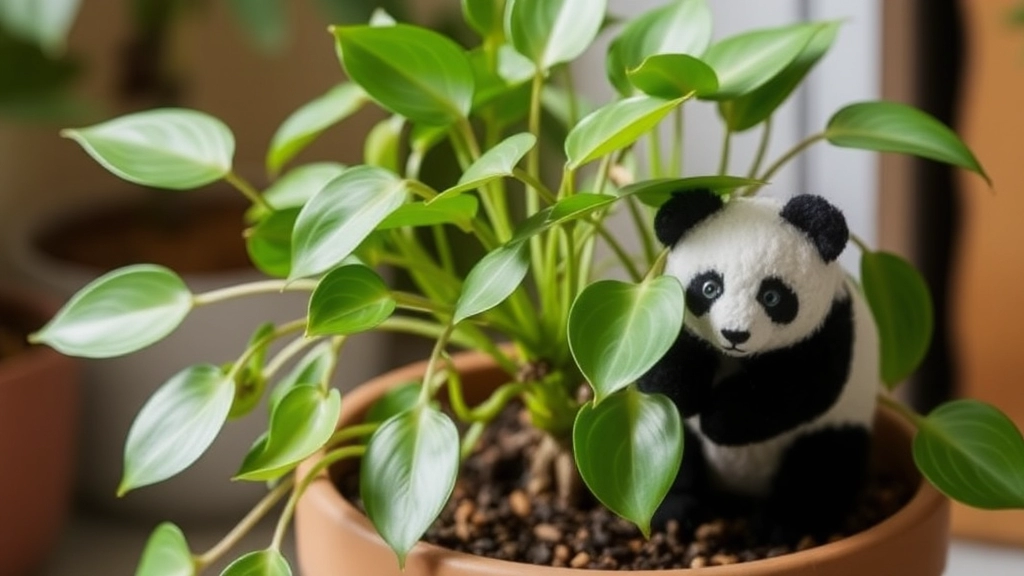
Have you ever wondered why your Kalanchoe tomentosa, or Panda Plant, isn’t living its best life indoors?
Let’s dive into some straightforward strategies to keep your plant happy and healthy in your home.
Light and Location
First off, light is crucial.
- Bright, Indirect Light: Panda Plants love bright, indirect sunlight.
- Avoid Direct Sun: Too much direct sun can scorch those lovely leaves.
- East or West Windows: If you can, place your plant near an east or west-facing window for optimal light.
Watering Wisely
Next up is watering.
- Check the Soil: Always check the soil before watering. If it’s dry a couple of inches down, it’s time to give it a drink.
- Less is More: Panda Plants prefer to be on the drier side. Overwatering is a common mistake.
Humidity and Temperature
The environment matters too.
- Keep it Cozy: Aim for a temperature between 18°C to 24°C.
- Low Humidity: These plants thrive in low humidity, making them perfect for indoor settings.
Fertilizing Tips
When it comes to feeding your Panda Plant:
- Light Feeding: Use a diluted cactus fertilizer during the growing season.
- Frequency: Once a month is plenty.
Observing Growth
Pay attention to how your plant responds.
- Healthy Growth: If your Panda Plant is growing well and has vibrant leaves, you’re on the right track.
- Signs of Stress: Yellowing leaves or drooping can indicate issues.
Toxicity Concerns for Pets and Humans
As we explore the care and maintenance of Kalanchoe tomentosa, it’s essential to address the potential toxicity concerns associated with this popular houseplant.
Many plant enthusiasts wonder: Is Kalanchoe tomentosa safe for my pets and children?
Toxicity Overview
Kalanchoe tomentosa, commonly known as the Panda Plant, contains compounds that can be harmful if ingested.
- For Pets:
- Kalanchoe is toxic to cats and dogs.
- Symptoms of ingestion may include vomiting, diarrhoea, and lethargy.
- For Humans:
- While not typically dangerous, ingestion can cause mild gastrointestinal upset.
- It’s best to keep it out of reach of young children.
Safety Measures
To ensure a safe environment for both pets and humans, consider these tips:
- Placement:
- Position your Panda Plant in a high, secure location.
- Education:
- Teach children about the plant’s potential dangers.
- Observation:
- Keep an eye on pets around the plant, especially if they are prone to chewing on houseplants.
For more detailed information on protecting your pets, read our guide on Kalanchoe tomentosa toxicity. Additionally, if you are looking to identify different types of Kalanchoe, check out our Kalanchoe succulent identification guide.
FAQs About Panda Plant (Kalanchoe Tomentosa)
How often should I water my Panda Plant?
Water your Panda Plant deeply but infrequently. Check the soil by poking your finger about an inch deep. If it feels dry, it’s time to water. Avoid watering if the soil is still moist.
What are the signs of overwatering?
Signs of overwatering include yellowing leaves, mushy stems, and a musty smell from the soil. If you notice these symptoms, allow the soil to dry out completely before watering again.
What temperature range is ideal for Kalanchoe Tomentosa?
The ideal temperature range for your Panda Plant is between 20°C to 25°C (68°F to 77°F) during the day and 15°C to 18°C (59°F to 64°F) at night.
How do I maintain the right humidity for my Panda Plant?
Panda Plants prefer moderate humidity levels between 30% and 50%. Avoid high humidity as it can lead to root rot.
What should I do if my Panda Plant has root rot?
If you suspect root rot, remove the plant from the pot and inspect the roots. Trim away any rotten parts and repot the plant in fresh, dry soil.
How can I get rid of mealybugs on my Panda Plant?
To remove mealybugs, use a cotton swab dipped in rubbing alcohol to wipe them off. For larger infestations, spray the plant with insecticidal soap or neem oil. Isolate the affected plant to prevent the pests from spreading.
What kind of light does a Panda Plant need?
Panda Plants thrive in bright, indirect light. Avoid placing them in direct sunlight as it can scorch the leaves. An east or west-facing window is ideal.
How should I fertilize my Panda Plant?
Use a diluted cactus fertilizer during the growing season, typically once a month. Light feeding is sufficient to keep your Panda Plant healthy.
Why are my Panda Plant’s leaves curling?
Leaf curling can be caused by too much direct sunlight, sudden temperature changes, or pests. Adjust the plant’s location to a spot with indirect light and ensure a stable temperature environment.
What are common pests that affect Panda Plants?
Common pests include mealybugs, spider mites, and aphids. Regularly inspect your plant for any signs of pests and take preventive measures to maintain a healthy environment.
References
-
Panda Plant Watering Guide
-
Kalanchoe Tomentosa Care Tips
-
Indoor Succulent Tips
